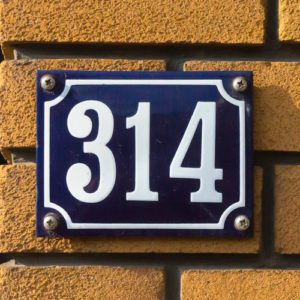Downsizing? Here’s How
 Whether it’s because your kids have left for college or you’re preparing for retirement, many homeowners choose to downsize at some point in their lives. Making the move from a large home to a smaller one can be both liberating and challenging. If you’re getting ready to downsize, here’s what you should know to make the process as easy as possible.
Whether it’s because your kids have left for college or you’re preparing for retirement, many homeowners choose to downsize at some point in their lives. Making the move from a large home to a smaller one can be both liberating and challenging. If you’re getting ready to downsize, here’s what you should know to make the process as easy as possible.
The benefits of downsizing
If you’re having trouble coming to terms with the idea of having a smaller footprint, it can be beneficial to remind yourself of why you’re downsizing in the first place. Do you have a room or rooms in your current home you never use? Are you looking for a way to lower your monthly expenditures? Do you want to live in a home where outside maintenance is taken care of for you? Downsizing can provide solutions to all these issues and allow you to make choices that fit the lifestyle you have now, not the one you had when you first moved in.
Determine your needs
OK, so you’ve decided it’s time to downsize. Now what? The first step you should take is to decide what you’re looking for in a new place. How many bedrooms do you really need? Would you like a home with no stairs? Are you looking for apartments that are close to amenities such as shopping, the gym, or restaurants? Take time to determine exactly what your needs are before you begin your search.
Assess your new space
Once you’ve zeroed in on your new home, measure each room and note how much storage is available. Be honest about how much space you actually have. There’s no sense in downsizing if you plan to keep all your possessions, so you’ll want to be clear on how much you’ll need to let go of so that you have enough room in your new space.
Decide what to keep
Here comes the hard part – deciding what to keep and what to get rid of. A good way to tackle this issue is to think about what you’d want to replace if you were to lose everything. Do you have exercise equipment gathering dust? Are you holding on to your kid’s items that they’ll never retrieve? Consider letting go of any items you haven’t used in the last year. If you’re in doubt, rent a storage unit for six months and store the items you’re uncertain about. Whatever items remain after that time elapses, you can let go of.
Sell or donate the rest
Once you’ve eliminated the items you don’t intend to take with you to the new house, you can sell or donate them. There are several ways to sell your belongings, from hosting a garage sale to posting items online on sites like Craigslist, Facebook Marketplace or eBay. For items you can’t or don’t want to sell, you can donate them to friends and family, or give them to charities such as Goodwill or the Salvation Army. Many organizations will even pick up your items for you if you arrange it with them in advance.
Organize as you move in
As you move into your new home, take time to organize as you go. That way, once you’re moved in, you can spend time on all those activities you only dreamed about when you lived in a larger home.
Although downsizing can be challenging, when you approach it with a healthy attitude it can be a truly exciting experience. Follow the guidelines above to make sure your move into a smaller space is just another turn in the road on the adventure of your life.
Compliments of Virtual Results





 When you’re selling your home, keeping it spotless for showings can be tough. But making sure it stays clean, especially when you have kids, can seem downright impossible. But there is hope! By having a plan and sticking to it, you can keep your home ready for visits, even at a moment’s notice. Here’s how.
When you’re selling your home, keeping it spotless for showings can be tough. But making sure it stays clean, especially when you have kids, can seem downright impossible. But there is hope! By having a plan and sticking to it, you can keep your home ready for visits, even at a moment’s notice. Here’s how. Let’s be honest – living in your home while you have it on the market can be tough. Not only do you need to keep it spic and span at all times, but you also have to be ready to show it on a moment’s notice. This can cause quite an upheaval in your daily life if you aren’t prepared. Although it can be stressful, it can be done. Here’s our best advice for how to survive your home sale.
Let’s be honest – living in your home while you have it on the market can be tough. Not only do you need to keep it spic and span at all times, but you also have to be ready to show it on a moment’s notice. This can cause quite an upheaval in your daily life if you aren’t prepared. Although it can be stressful, it can be done. Here’s our best advice for how to survive your home sale. Do good fences make good neighbors? You can
Do good fences make good neighbors? You can 
 Spring is just around the corner. If you’re getting ready to put your house on the market, that means it’s time to add a little pizzazz to the exterior. First impressions count in real estate, and making your home look inviting on the outside will coax more buyers through your front door. Since spring is one of best times to make your home look stunning, we thought we’d share our tips on how to spruce up your curb appeal without emptying your wallet. And the bonus is that these projects will only take a weekend to complete. If your home’s siding has seen better days, seeking
Spring is just around the corner. If you’re getting ready to put your house on the market, that means it’s time to add a little pizzazz to the exterior. First impressions count in real estate, and making your home look inviting on the outside will coax more buyers through your front door. Since spring is one of best times to make your home look stunning, we thought we’d share our tips on how to spruce up your curb appeal without emptying your wallet. And the bonus is that these projects will only take a weekend to complete. If your home’s siding has seen better days, seeking  Are you gearing up to sell your home? Then you should know that there are certain things you are legally required to disclose to potential buyers. If you don’t, you could find yourself in legal or financial hot water. While disclosure regulations vary by state, here are some main issues you are required to tell buyers.
Are you gearing up to sell your home? Then you should know that there are certain things you are legally required to disclose to potential buyers. If you don’t, you could find yourself in legal or financial hot water. While disclosure regulations vary by state, here are some main issues you are required to tell buyers.



 Catch Our Feed
Catch Our Feed Subscribe via Email
Subscribe via Email Follow Our Tweets
Follow Our Tweets Friend Us On Facebook
Friend Us On Facebook Watch Us On Youtube
Watch Us On Youtube